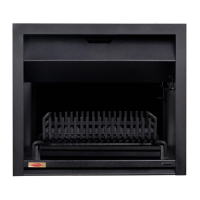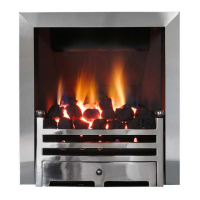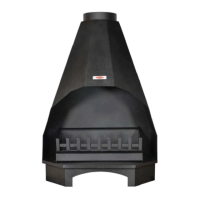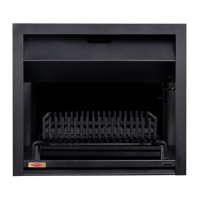Where direct connection of the flue from fire to chimney cannot be achieved, the flue liners
or flue pipe should be taken up as high as possible within the narrowing inglenook chimney,
to extend at least 2 metres (6 ft 6 in) above the register plate level. In this case the register
plate should be made of steel or aluminium and a removable section should be incorporated,
of adequate size to allow access for inspection and cleaning. The register must be air tight and
sealed around the edges, the flue connection passing through it and the inspection access
cover. The register should be supported on a framework of steel or aluminium.
Flue liners or flue pipe used must be of the correct size for the fire and must be suitable for use
with open fires. Flue pipes of aluminium or asbestos may not be used, nor may flexible pipes of
aluminium or single wall stainless steel.
The Arched Lintel
Secured to the top of the fire, the arch lintel extends 100mm (4”) in front of the frame to form
an arched support for a brick or stone facing. It can be of particular use where a deep lintel
supporting the chimney breast prevents the fire being set fully forward in the opening.
A resilient gasket, such as glass fibre, should be interposed between the fire structure and the
lintel, and between lintel and facing material, to allow movement under varying temperature and
to ensure that a seal is formed preventing air leakage into the flue if a gather is not used.
It is possible to use both an arched lintel and a Jetmaster steel flue gather.
Fillet Plate
Where the installation is to be carried out into
an existing opening which is already gathered
starting at a height not more than above
600mm above the top of the unit to be fitted, it
is not necessary to utilise the Jetmaster gather.
However, it is essential to create fillets just above
the top of the fire to prevent any falling soot or
debris from settling on top of the insulation and
any infill blockwork. This is particularly important
to the rear of series 5 Jetmaster fires that have
the 70mm chamfer at the top of the firebox.
There is an optional accessory available which
may be fitted by drilling two holes in the side of
the smoke outlets. This fillet plate enables a rear
fillet to be achieved with minimum effort and over
a range of rear clearance.
15
